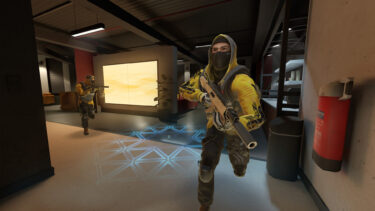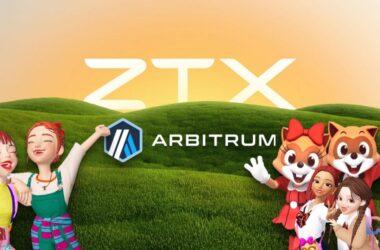The Metaverse has come to change the internet forever, and we are now discovering this brand-new way to interact online with both people and spaces. The idea of Virtual Reality has existed for a long time, as has the desire to execute them in a way that could be accessed by the masses, but the lack of capable technology for development and high prices for hardware to access have so far made this impossible.
However, the Metaverse leaves the idea of a virtual reality behind. It isn’t just about pretending to be in a different space through video and audio. The Metaverse offers a completely immersive experience with haptic technology, audio, video, interactivity, and more. It really is a completely new way to socialize and do business online.
And the immersive experience of the Metaverse doesn’t need VR equipment. The rich 3D environments and avatars can still offer a great immersive experience no matter the hardware used. This is what has made the concept of the Metaverse so popular that it is considered the future of the internet.
The problem is that this fully functional and accessible Metaverse is not the present of the internet. The current Metaverse and Virtual Worlds offering lack in several important aspects, and it is quickly obvious that the technology hasn’t yet caught up with the ideas and this unified and vast Metaverse that you can navigate for hours having fun with your friends, shopping, or doing business or offering services is far from a reality yet.
Metaverse Spaces
The concept of “Metaverse Spaces” suggests the existence of virtual environments that users can visit and interact with, socialize or do business in, and more. These would be 3D spaces with information for interaction – such as picking up products from a shelf- or for socializing -like virtual cafes.
The details of how these spaces would work come down to the use the space would have, the platform they are on and the available hardware to use them. These spaces, created by 3D model creators and designers, could be virtual replicas of real-world spaces, like streets and buildings, or completely imaginary.
They can also be “inside” of buildings or outside, like gardens and parks. The possibilities really are endless, as is with all things related to the Metaverse, where your virtual avatar can look however you want and wear completely virtual clothes that just aren’t possible in the real world.
The concept of these spaces existing next to each other, no matter the platform, and the user being able to navigate from one space to another no matter the platform or the owner, is currently stifled by the method in which these spaces are identified in the different Metaverse and Virtual Worlds platforms.
The problem with Metaverse Addressing and unification
One of the aforementioned areas in which current Metaverse offerings are still lacking is in the identification of spaces and navigation.
The way it currently works is that each provider has a map of its Virtual World, and this map, just like any other, has coordinates. Each space in this Virtual World is then identified by the coordinates it has in the platform’s map, and you need to visit the platform’s page and use its
navigation tools to reach the space, and this is the reason why the Metaverse cannot be unified. This is known as the Spatial Coordinates addressing system and it is used by Metaverse providers like Decentraland and Somnium Space. Each space in these virtual worlds is named with a set of coordinates.
This method is repeated in each separate platform, which inevitably leads to different spaces in different platforms having the same coordinates as their identification, only differentiated by the map they are in. This means these different maps can never combine into one since that would result in several spaces having the same identification.
It is very clear that if the Metaverse is ever to be one vast virtual world where all these different maps are next to each other, and the spaces in them are all existing at the same time, a radical change in the way spaces are identified and navigated to needs to happen.
Proposed solutions to the addressing problem
The problem with naming and addressing the different Metaverse spaces has plagued virtual worlds since the beginning. Naming the Metaverse spaces with their coordinates was the easiest method at the time, but as more virtual worlds appear and the demand for unification grows stronger, many solutions have been proposed, though none seems to have been favored over the others so far.
One such option is the Decentralized Naming System, one similar to the current Domain Name System (DNS). This solution proposes that each virtual space and entity have a human-readable name that can be turned into its name through a decentralized system.
The Ethereum Name Service (ENS) is built on the Ethereum blockchain and allows users to register human-readable names to identify Ethereum addresses and smart contracts. Handshake also
offers a decentralized naming protocol, enabling users to create top-level domain names without a central authority.
Another proposed solution is the Universal Identifier System, or the creation of an identifier system that assigns a unique and persistent identifier to each entity or location in the Metaverse. This would ensure each location has a distinct identity that can be easily referenced and accessed.
Teleport Plaque Addresses by Stage Meta work with this idea, offering a six-character code to identify each location in the Metaverse. These unique codes would not only act as names for the spaces but the Teleport Plaque would make travelling to each location instantaneous, no matter the Virtual World, since the system would be decentralized as well.
Other options for Universal Identifier Systems are Decentralized Identifiers or DIDs, a type of persistent identifier for entities and objects, built on blockchain technology and allow users to create and manage their own decentralized entities and objects.
Finally, a hybrid approach that combines any of the above solutions could also prove to be the solution. For example, Teleport Plaque Addresses -or TPAs- could identify the different locations or spaces, while DIDs can be used to identify objects inside those spaces.
These combinations could create a flexible and decentralized solution for identifying everything inside the Metaverse, making unification of the different Virtual Worlds possible.
The Metaverse is the future of the internet. There is no doubt about it. However, how fast and how well this new age of online life will come depends on those developing technology for it finding creative and functional solutions to the many problems that still plague the concept and keep it from becoming a reality.
Whether it is the identification of spaces or the price range of the hardware used to access the Virtual Worlds, the overcoming of all these obstacles is what will bring the internet over the edge into its next iteration, and then we will change with it again, as we have in the past, and humanity itself will not be the same again.
It’s not a matter of if. It’s a matter of when.
—
This is a sponsored guest post brought to you by Stage Meta.
Source: Cryptoslate





